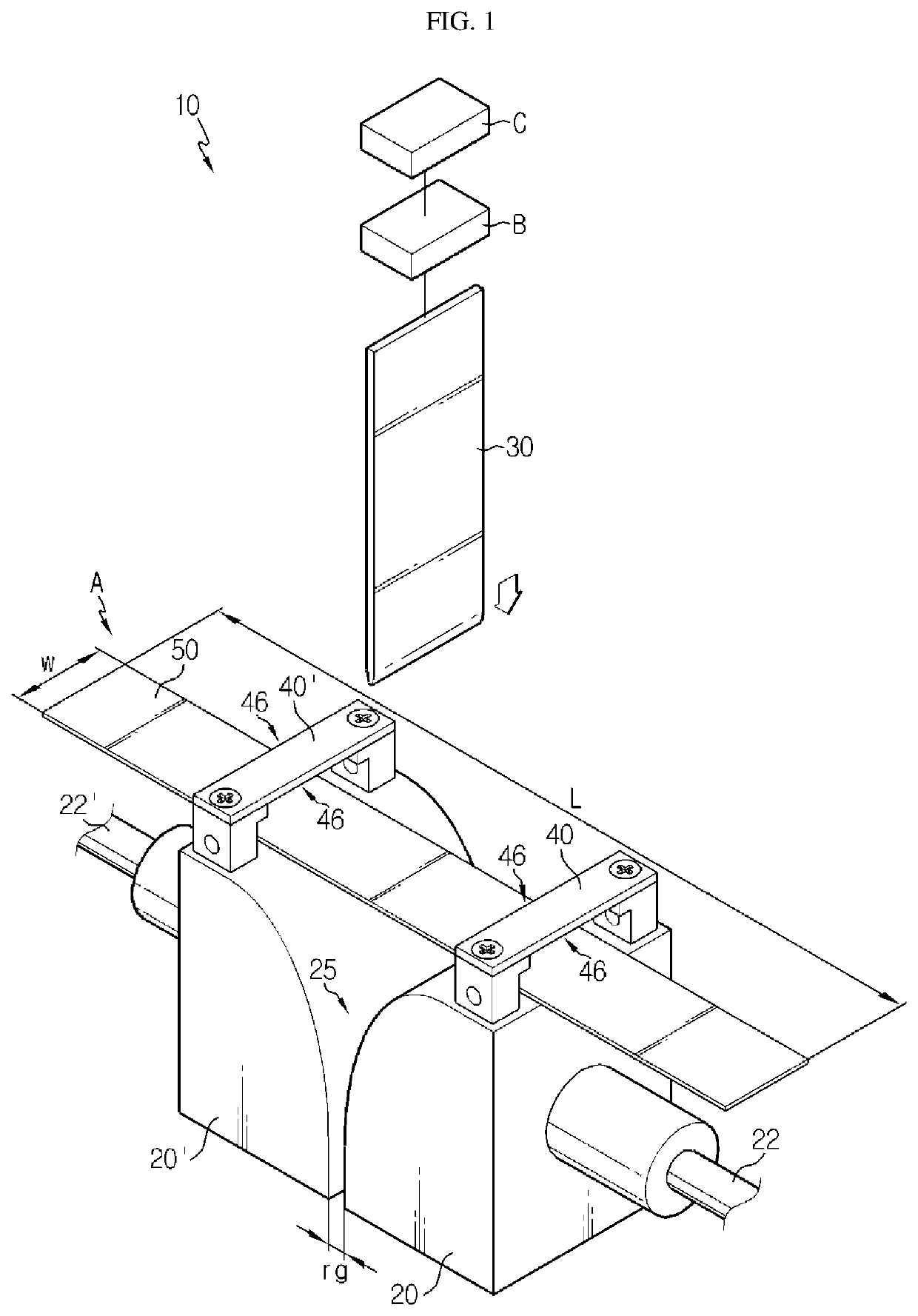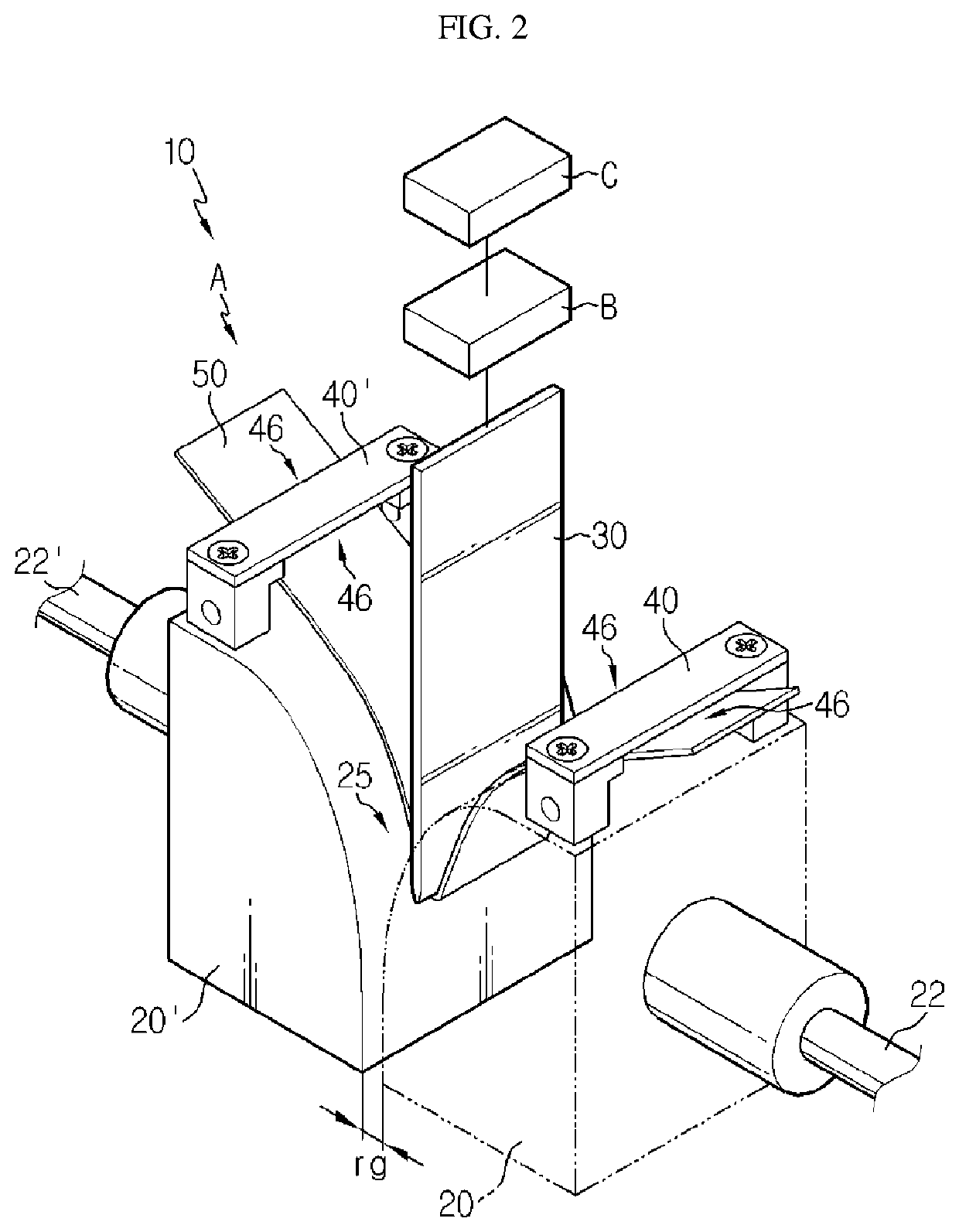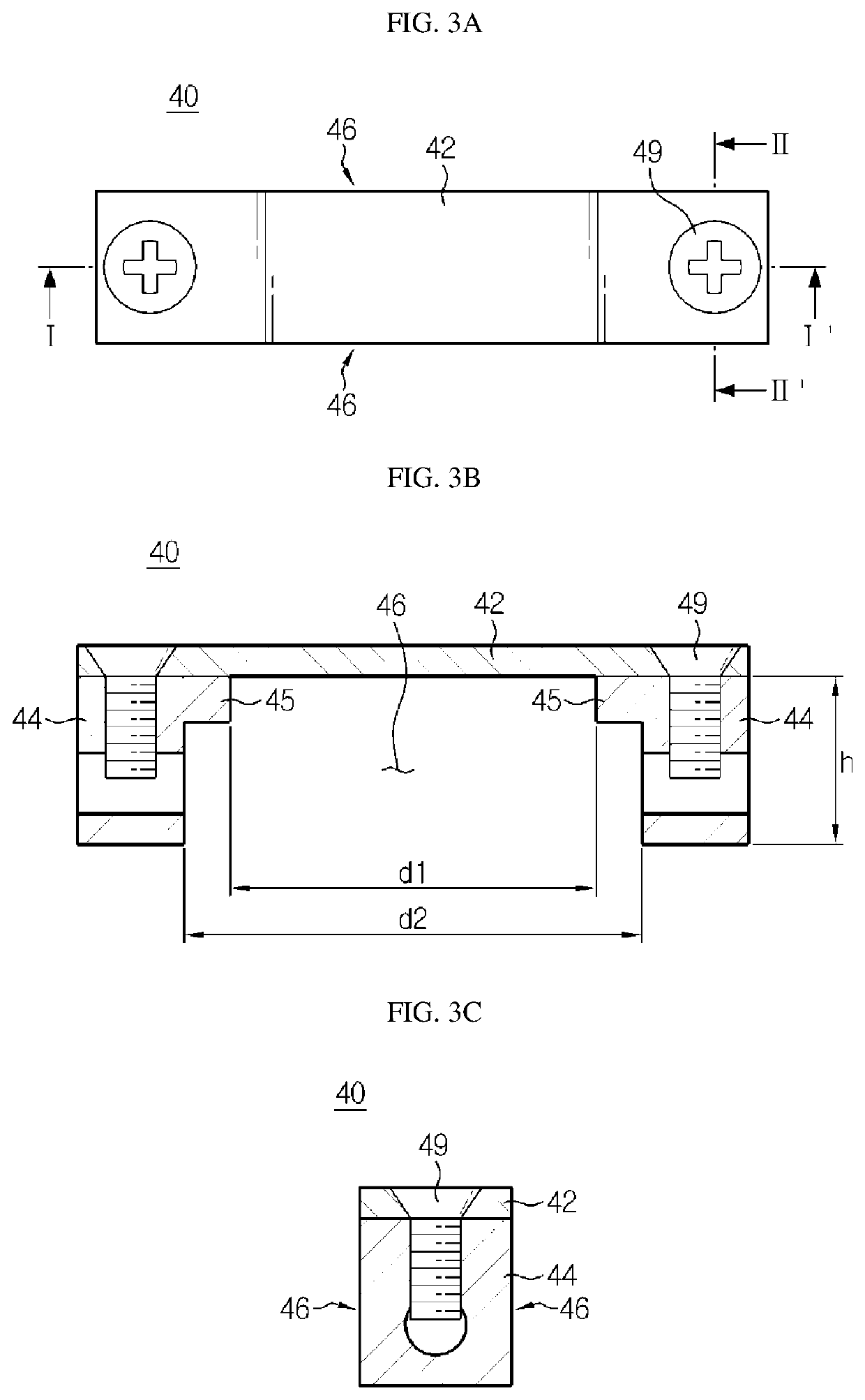Apparatus and Method for Evaluating Electrode Embrittlement
a technology of embrittlement and electrode, applied in the direction of material strength using steady bending force, material strength using tensile/compressive force, instruments, etc., can solve the problems of no method to determine, crack generation, and negative electrodes may be positive or negative, etc., to achieve accurate, convenient, and easy evaluation of electrode brittleness , the effect of reducing the risk of fractur
- Summary
- Abstract
- Description
- Claims
- Application Information
AI Technical Summary
Benefits of technology
Problems solved by technology
Method used
Image
Examples
example 1
[0172]Positive electrode active material slurry was manufactured by mixing LiCoO2 as a positive electrode active material, carbon black as a conductive material, PVdF as a binder, and Li2Co2 as an additive at a weight ratio of 97.2:0.9:1.5:0.4 and then adding a N-methyl-2-pyrollidone (NMP). The manufactured slurry was coated on one surface of an aluminum foil, dried, and rolled, and a positive electrode specimen was manufactured by punching a result product to a uniform size by using a specimen tension cutting machine. Here, a rolling degree was 39%.
[0173]A displacement-force graph of the positive electrode was obtained by using the brittleness evaluation apparatus 200 of FIG. 10.
[0174]During measurement, the size rgmax of the inlet of the groove 125 formed at the oval jigs 120 and 120′ was 50 mm while the width rgmin at the bottom of the groove 125 was 1 mm. Also, the thickness (for example, the thickness 33 of the pressing plate 30 in FIG. 4) of the pressing plate 130 was 1 mm, wh...
example 2
[0179]An electrode was manufactured in the same manner as Example 1 except that the rolling degree was 32%, and a displacement-force graph was obtained. A result thereof is the graph of FIG. 15.
[0180]Regarding brittleness measurement of Example 2 as well, an initial angle of a positive electrode specimen was 20° when the pressing plate 130 was descended, and an inflection point on the graph of FIG. 15 was generated when a specimen angle was 60°. Since the brittleness evaluation apparatus 200 includes the guides 140 and 140′, it is determined that the specimen angle was consistently measured at the initial angle and the inflection point in both Example 1 and Example 2.
[0181]Also, since a shape of the graph of FIG. 15 is similar to the displacement-force graph of ductile / brittle described in FIG. 11, it may be determined that the positive electrode specimen of Example 2 is also ductile / brittle. Also, a brittleness value BV2 that is a difference between values of force before and after...
PUM
 Login to View More
Login to View More Abstract
Description
Claims
Application Information
 Login to View More
Login to View More - R&D
- Intellectual Property
- Life Sciences
- Materials
- Tech Scout
- Unparalleled Data Quality
- Higher Quality Content
- 60% Fewer Hallucinations
Browse by: Latest US Patents, China's latest patents, Technical Efficacy Thesaurus, Application Domain, Technology Topic, Popular Technical Reports.
© 2025 PatSnap. All rights reserved.Legal|Privacy policy|Modern Slavery Act Transparency Statement|Sitemap|About US| Contact US: help@patsnap.com



